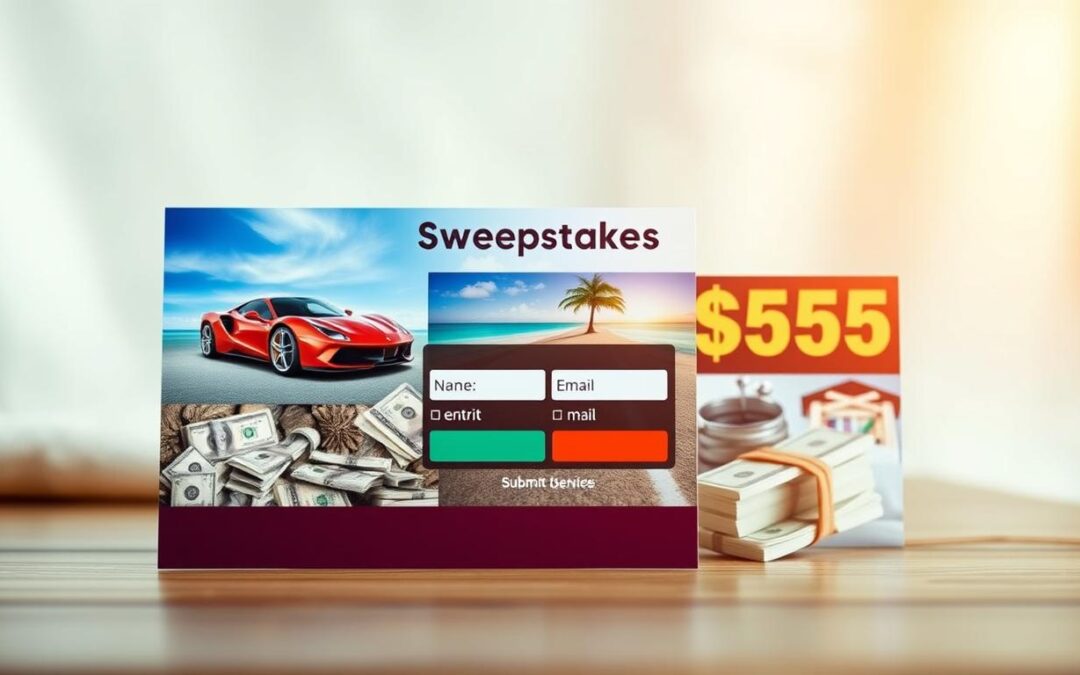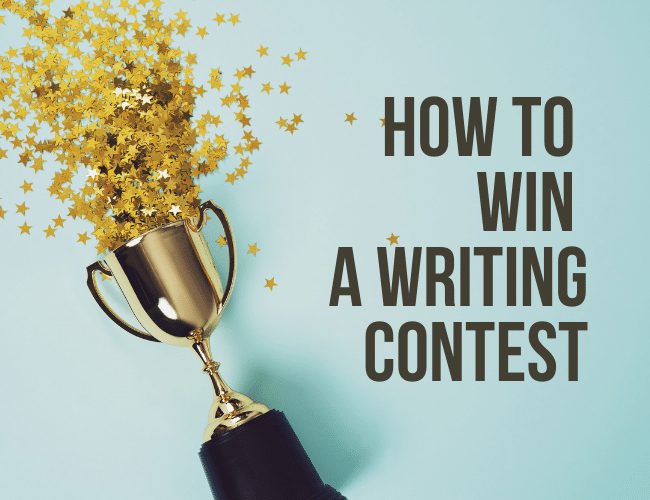Every contest needs a clear tale. Digital entries rose 35% from 2020 to 2023, and 72% of entries came in online last year. That means people expect instant clarity on what they can win and why your brand fits.
In this guide, you’ll get practical tips for linking your marketing goals with a tight narrative. Use a simple hook, a clear call, and a fast entry flow to boost awareness and entries.
Most promotions live on social channels now; 58% ran mainly on social in 2024. Over 71% of entries arrived via mobile in 2023, and mobile-optimized pages saw 40% higher participation in 2024. Design for phones first.
Expect actionable information on structuring your contest page, cutting friction, and using proof points that drive trust and measurable results. These steps help turn a giveaway into brand-building momentum that moves people to act.
Start with the “Why”: Define the Story Your Sweepstakes Should Tell
Pick a clear marketing goal first so every contest choice supports that aim.
Name the single outcome you want—awareness, engagement, entries, sales, or loyalty. This gives your promotion a sharp purpose and makes creative choices simple.
Choose a prize that real people want and that fits your brand. A relevant prize attracts qualified users rather than freebie hunters and keeps entry quality high.
Set timing and duration from analytics: pick a window that allows social media amplification but keeps urgency. Confirm mechanics early so prize fulfillment, winner notices, and follow-ups are realistic.
Example: If your marketing need is email growth, an entry that captures addresses or requests a short photo as UGC can match that goal and lift engagement.
- One clear goal: name it at the top of your brief.
- Prize alignment: match value to audience and brand.
- Execution check: confirm fulfillment, timing, and rules.
Plan and Protect: Rules, Timing, and Structure for a Contest or Sweepstakes
Plan the structure first: rules, platform setup, and fulfillment drive a smooth launch. Clear legal guardrails prevent surprises and protect your brand. Build an accessible rules page that lists eligibility, start and end time, prize descriptions and ARVs, entry limits, winner selection, verification steps, and fulfillment windows.
Legal basics and AMOE
In the U.S., promotions vary by state. If purchases are encouraged, include an alternate method of entry (AMOE). State and local requirements differ, so get counsel and state your AMOE in the official rules.
Structure, format, and platforms
Decide whether the program is a contest (skill/judging) or a sweepstakes (random drawing). Choose a reliable administration platform and tools that handle fraud detection, receipt validation, secure winner selection, and analytics.
Timing and fulfillment
Set a time frame that creates urgency without fatigue. Use milestones or daily instant-win moments to sustain interest. Work backward from fulfillment: confirm procurement, tax handling, and delivery before publicizing your promotion.
- Quick tips: state rules clearly, use secure platforms, and outline verification steps.
How to Write a Sweepstakes Success Story
Lead with the prize and the purpose in one crisp line. Open with a short benefit-led hook that names the reward, the timeline, and the simple action required for entry. Add a strong image and minimal text above the fold to show value before readers scroll.
Craft the hook
Make the hook benefits-led: “Win a weekend getaway” plus the deadline. List the single action needed and one quick note about rules near the CTA. Clear mechanics cut doubt and lift conversions.
Humanize the narrative
Feature people behind the brand and real winners. Use a short quote or an example that shows your mission in plain language.
"Our handwritten note made this feel personal and real." — Big Island Coffee Roasters follow-up example
Make the call unmistakable
Use one decisive CTA and a smaller social share option. Spell out how many entries each action earns and include an optional referral step that rewards sharing without requiring it.
Weave in social proof and media
Show recent winners with names and photos, add short clips or a carousel, and publish follow-ups after winners are announced. Vacabee increased sharing by adding a “Secret Tip” that gave each participant a unique link for more referral credit.
- Quick checklist: bold prize promise, visible rules link, single CTA, optional referral steps.
Design the Experience: Pages, Media, and Actions That Drive Entries
A clean, focused page turns casual visitors into entrants by removing doubt fast. Build one clear landing page with a single goal: show the prize, state the rules, and guide users to the primary entry action.
Consider a dual approach: embed a contest section on your website for discovery, and link a dedicated landing for deeper details. Sippd combined a dedicated landing with an on-site pop-up that captured emails quickly.
Lead with a tight hero block: headline, subhead, and one button. Use concise text that answers what, who, when, and how in seconds.
Use multimedia sparingly. Northern Tool put a video at the top while keeping rules visible. Keep images crisp, add helpful alt text, and compress media so load time and completion rate stay high.
Design mobile-first with a single-column layout like Selkirk’s. Reduce form fields to essentials—name and email—then offer optional actions after the primary entry. Repeat the CTA above the fold and again after key details to make the way to participate unmistakable.
- Quick tips: fast load, simple forms, clear rules, repeat CTA.
Channels That Power Your Story: Social Media, Email, and Partnerships
Use each platform’s native strengths to amplify your giveaway and keep entry friction low.
Social media contests and influencer collaboration that spark engagement
Lead with social media where discovery happens. Tailor creative for feed, story, and short video formats. Keep mechanics simple on social: a like, follow, or comment can qualify an entry while richer tasks live on your landing page.
Email and on-site placements: banners, pop-ups, and a strong landing
Use email to reach customers with a clear subject and a single-link CTA. Add on-site banners, nav bars, and exit-intent pop-ups that point to the landing page and nudge action.
Cross-promotions and brand partners to expand reach and trust
Partner brands widen reach and share duties. The Pickleball Clinic example shows multi-brand entries can attract qualified participants. GSK’s influencer program used personal stories and nominations for deeper trust.
| Channel | Best use | Key metric | Compliance note |
|---|---|---|---|
| Social media | Discovery + quick entries | Shares / engagement | Follow platform policies |
| Direct invite & reminders | Open / click rate | Clear opt-outs | |
| Partners | Extended reach & credibility | Referral entries | Agree on mechanics |
Measure with UTMs and per-channel links so you can shift spend to the channels that drive the best marketing performance.
Data-Driven Storytelling: Tools, Tracking, and A/B Testing for Better Results
Good measurement turns a story-driven campaign into repeatable marketing gains. Start by naming the core metrics you will watch: page views, entries, conversion rate, share rate, and referrals.
Connect your landing page to Google Analytics and your contest builder. Use clean UTM structures so you can attribute which channels and creatives deliver the best results.
Pick a capable platform that includes fraud detection and receipt validation. Add a tool stack with heatmaps and session replays to tie on-page behavior to outcomes.
Keep A/B tests tight: change only one element per test—title, hero image, form field, or CTA. Small lifts compound across the campaign.
- Define metrics: dashboards that update daily.
- Use platforms: fraud checks, analytics, and quick optimization.
- Test smart: focus on mobile cohorts and form friction.
- Close the loop: tag winners and fulfillment for downstream results.
Real-World Inspiration: Examples and Frameworks You Can Adapt
Practical case studies reveal the small tweaks that create big engagement lifts.
Vacabee turned a basic form into an engagement-first giveaway by adding a friendly “Secret Tip” prompt that boosted referrals and reach.
Northern Tool used a top-of-page video to show, not tell, keeping rules visible so participants grasped the offer fast and trusted the page.
Goose Island bridged in-store and digital with receipt or glass image validation, capturing purchase data while growing sweepstakes entries.
Sippd combined a frictionless pop-up for instant capture with a deeper landing that educates users, matching intent at different moments.
Selkirk kept a single-column mobile layout, reminding teams that simple pages from social media improve completion rates for participants.
"Our handwritten note made this feel personal and real." — Big Island Coffee Roasters
Takeaways:
- Pair video or images with clear rules for fast trust and quick entries.
- Mix instant wins with a grand prize to keep participants coming back.
- Use partners and prize tiers that complement your products and grow awareness.
Conclusion
Finish strong: keep your landing page live after the promotion and post winner updates that bring steady site traffic and renewed interest.
Use email and social follow-ups to turn one-time entries into ongoing engagement. Lean on templates and resources from specialist platforms for fast setup and support when time is short.
Treat each giveaway as a great way to meet marketing goals. Measure entries, test creative, and adjust quickly so every action helps the business and people who joined feel valued.
Remember: clear rules, prompt fulfillment, and a friendly follow-up make your contest a powerful promotion that keeps working long after the deadline.


